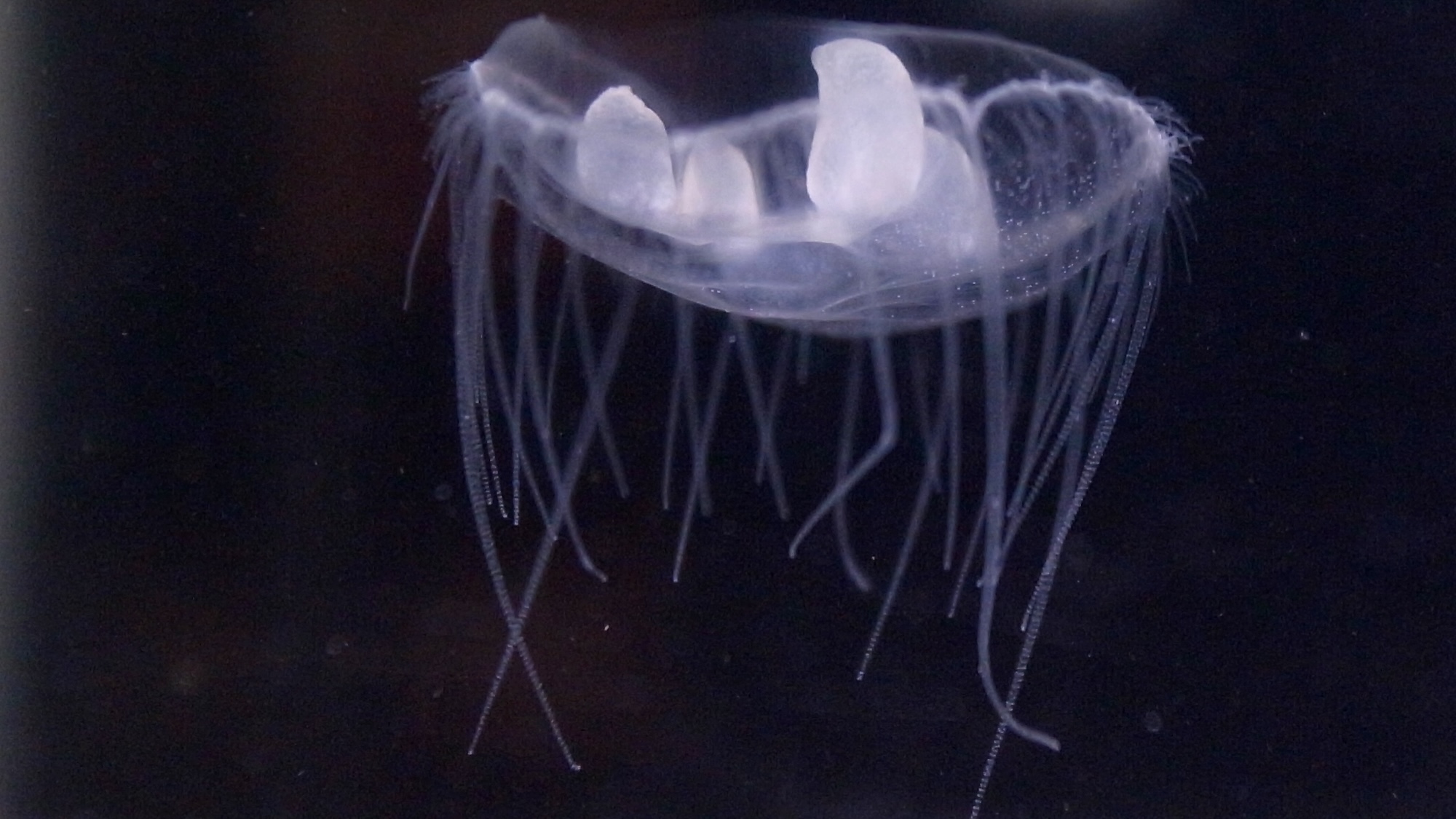Although originally from Yangtze, China, the peach blossom jellyfish can now be found on every continent in the world except for Antarctica. Researchers in one country, however, are documenting Craspedacusta sowerbii’s ongoing spread further north than ever before—but unlike most other invasive species, these newcomers are nearly identical genetic “clones.”
Mature peach blossom jellyfish are roughly one-inch-wide, extremely delicate invertebrates featuring tightly packed whorls of around 400 tentacles that, while venomous, aren’t harmful to humans. They thrive in calm or slow moving freshwater habitats like lakes, reservoirs, and river backwater channels, and possibly migrate by hitching rides on the feet and bills of birds, or by latching onto boat hulls. Experts believe the first peach blossom jellyfish left China sometime during the early 20th century before quickly proliferating in warmer water sources across the globe.
Canadian sightings in the Great Lakes regions date back to the 1930s, but C. sowerbii has more recently been seen in areas like British Columbia’s Lower Mainland and Vancouver Island. An estimated 85 sightings—each implying thousands of jellyfish—have been documented between 1990 and 2023. But according to University of British Columbia (UBC) researchers, nearly the same number of sightings could occur before the end of this decade alone. What’s more, they will likely spread across wider areas.
“We’re the only researchers in Canada investigating these jellyfish, with help from citizen scientists around BC,” says Florian Lüskow, a former postdoctoral fellow at UBC’s department of earth, ocean, and atmospheric sciences (EOAS) department said in a September 3 university profile.
While there’s still much to learn about the jellyfish’s lives in Canadian waters, researchers do know the rare way in which they reproduce—a variation of asexual reproduction that results in millimeter-sized polyps containing the same genetic material as their parent. This means that each individual population is often composed of “effectively clones” of one another, said Lüskow. This means any given sighting usually implies an all-male or all-female grouping.

Peach blossom jellyfish generally spawn in large numbers only in water temperatures at least 70 degrees Fahrenheit. But as Lüskow’s collaborator Evgeny Pakhomov, a professor in UBC’s Institute for the Oceans and Fisheries and EOAS department, explains, this may not always be the case.
“Polyps are very small… and it is challenging to locate them. They inhabit shallow areas and can be found on rocks and submerged wood debris,” he said on Tuesday. “Hence, we usually know about jellyfish introduction when we see the floating medusa form produced by polyps appear in the water, which appear only when water temperature is higher than 21 degrees Celsius.”
What is certain is that water temperatures will frequently meet or exceed that threshold as climate change continues to alter regional environments. This means that, not only will these hidden populations start coming to light, but peach blossom jellyfish will soon likely thrive in wider areas that are even further north.
“Modeling indicates that even Alaskan reservoirs may potentially see invasion,” Pakhomov warned.
[Related: New jellyfish discovered near Japan may contain multitudes of venom.]
Because so little is known about how the invasive jellyfish may affect native species and their ecosystems, it remains to be seen what will happen as they spread. Going forward, Lüskow and Pakhomov hope to more accurately and properly map peach blossom jellyfish distribution in British Columbia while also quantifying their impacts on a habitat, particularly as it may relate to young salmon populations. They also encourage locals to submit any potential sightings to iNaturalist, the Invasive Species Council of BC, or even directly to the researchers.
It’s not all ominous—in fact, Pakhomov says there is a “silver lining” to the current situation. Each of the 100 jellyfish he and Lüskow recently examined for a study published in the September issue of the Canadian Journal of Zoology were male “clones” originating from the same polyp or polyp cluster. While asexual, the lack of female peach blossom jellyfish populations indicate the males “cannot [fully] complete their sexual reproduction and thus its adaptation to new environments will be limited.” But although this factor will “curtail their spread,” Pakhomov still believes it’s important to continue learning as much as possible about the Canadian peach blossom jellyfish in order to recommend the most effective and informed management solutions.

